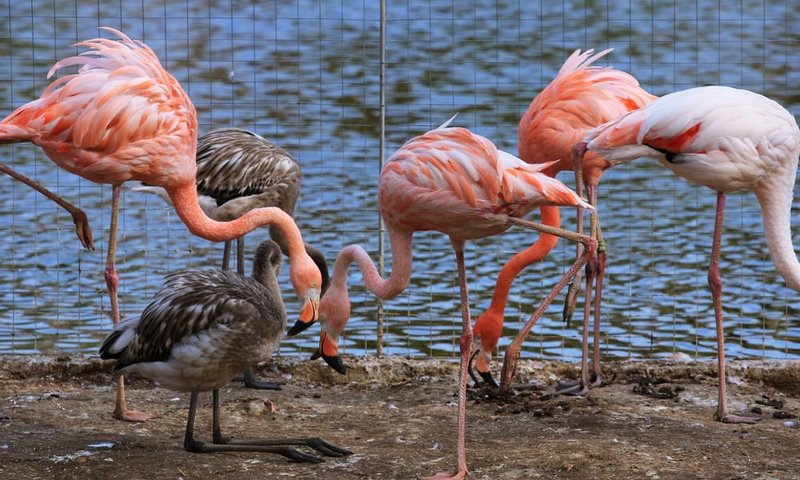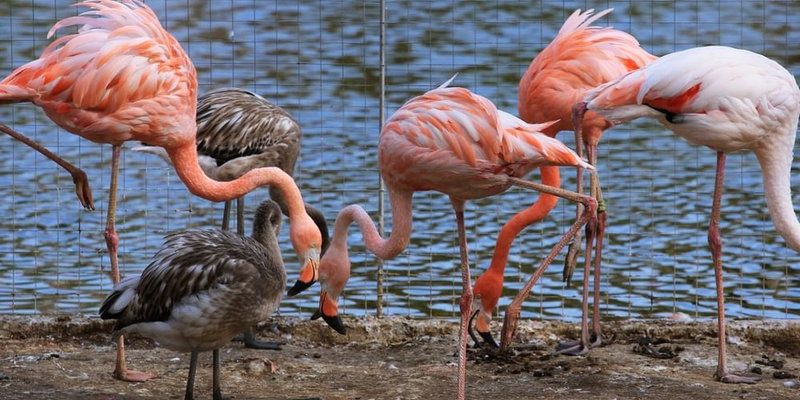
You might not think about it, but the flamingo’s diet is a big part of what makes them unique. Their feeding habits are not just interesting; they also play a key role in their stunning color. In this article, we’ll dive into what flamingos eat, how they hunt for their food, and some fascinating facts about their diet that might surprise you. So, grab a cup of coffee, and let’s explore the world of flamingos!
Flamingo Diet: What’s on the Menu?
Flamingos are omnivores, which means they have a diverse diet that includes both plant and animal matter. Their main foods consist of algae, brine flies, and various small crustaceans. Picture this: in the shallow waters of lakes and lagoons, flamingos scoop up these tiny morsels while wading through mud and water. It’s like a buffet, and they know exactly where to find the best dishes.
The pink color of a flamingo actually comes from its diet! They consume a lot of carotenoids, which are pigments found in their food, particularly in the algae and brine shrimp they eat. When you see a flamingo, those vibrant hues are a direct reflection of its meal choices. If they were to eat a different diet, say if they were just nibbling on plain lettuce, you can bet they wouldn’t be as colorful!
Flamingos are particularly fond of blue-green algae, which grows in some salty lakes. This algae is rich in nutrients and serves as a significant food source. Additionally, the brine shrimp they forage on in salt lakes is another favorite treat, providing protein and contributing to their pink tint. It’s amazing how interconnected their diet is with their physical appearance!
How Flamingos Hunt for Their Food
You might be wondering how flamingos manage to find their meals in the often murky waters they call home. The secret lies in their unique feeding techniques. Flamingos have specialized beaks that are designed for filter feeding. Think of it as nature’s very own strainer! When they lower their heads into the water, their beaks work in a way that allows them to sift through the mud and water to grab tiny food particles.
When a flamingo feeds, it typically stands on one leg—yes, like a graceful yoga pose! By balancing on one leg, they can use the other to stir up the sediment on the bottom and make it easier to find food. It’s a smart move that allows them to maximize their foraging efficiency. They can also move their heads side to side, which helps them “taste” the water and catch whatever delectable bits float by.
Many flamingos are social eaters, often seen feeding in groups. This not only makes for a stunning visual spectacle but also increases their chances of finding food. When one flamingo discovers a good feeding spot, others often join in. You can picture them all together, wading gracefully through the water, sharing secrets of the best dining spots in the lagoon!
Feeding Strategies: The Art of Foraging
Flamingos have developed several clever strategies to hunt and forage effectively. One of their key techniques is called filter feeding. This involves the birds dipping their heads into the water and using their specialized beaks to filter out food from mud and silt. Their beaks are curved and have a comb-like structure inside called lamellae, which helps catch tiny creatures while letting water flow out.
Different species of flamingos have slightly different feeding techniques. For instance, the American flamingo often feeds in deeper waters than the Lesser flamingo, which prefers shallower areas. Knowing where to look is crucial; it’s like knowing the perfect spot to cast your fishing line! Flamingos also tend to forage in tidal zones where food is plentiful, maximizing their chances of finding delicious snacking opportunities.
Another interesting aspect of their feeding is how they use their eyesight. Flamingos have keen vision, which helps them spot food from a distance. They can see movement and color well, allowing them to identify algae blooms or swarms of brine flies. If you ever get a chance to watch them feed, pay attention to how they seem to know exactly where to go—it’s all part of their foraging strategy!
The Role of Habitat in Flamingo Diet
The habitat where flamingos live plays a significant role in what they eat. Flamingos are typically found in shallow, brackish lakes and lagoons. These environments are rich in biodiversity, which means there’s plenty of food available. The salinity of the water also affects the types of microorganisms that thrive there, influencing their diet.
In regions like the Caribbean and parts of Africa, you’ll find flamingos feeding on brine shrimp and algae found in saline lagoons. These areas are often teeming with life, creating a perfect buffet setting. In contrast, when you look at flamingos in places that are more freshwater-based, like lakes, their diet may shift slightly to include different algae and insects. It’s fascinating how adaptable these birds are, depending on their surroundings!
Climate changes and habitat destruction can threaten these delicate ecosystems. If their habitat is affected, it can have a serious impact on their food sources. Conservation efforts are crucial to ensure flamingos and their foraging habits continue to thrive in the wild. It’s a reminder of how interconnected our ecosystem is—if one piece falls, it can affect the whole puzzle.
Flamingos are more than just beautiful birds with striking colors; they have a rich and complex diet that plays a crucial role in their lives. From their specialized beaks to their unique foraging techniques, these creatures have adapted perfectly to their environments. You might find it delightful to think of them as nature’s gourmets, skillfully navigating their watery homes to find food.
Understanding what flamingos eat and how they hunt helps us appreciate the delicate balance of nature. Their diet isn’t just a matter of survival; it’s a way of life that keeps them vibrant and thriving. So, next time you see a flamingo, take a moment to marvel at the clever ways they find food, and perhaps consider how each bite they take is part of a much larger ecological story.

